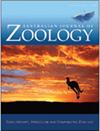Sand characteristics do not influence hatching success of nests at the world’s largest green turtle rookery
IF 1
4区 生物学
Q3 ZOOLOGY
引用次数: 4
Abstract
Abstract. Raine Island, located in the northern Great Barrier Reef, hosts the largest green turtle nesting aggregation in the world, but typically experiences low hatching success (20–60%, depending on the number of females visiting the island to nest). To determine whether the low hatching success of green turtle eggs at Raine Island might be explained by local sand characteristics, we investigated the physical properties of Raine Island sand and compared it to sand from other eastern coast Australian sea turtle nesting beaches that have high hatching success (>80%). We also measured the water, salt and organic material content of sand within nests at Raine Island to see whether any of these variables were correlated with the proportion of early embryo death or hatching success. The physical characteristics of Raine Island sand were similar to those of other eastern coast Australian nesting beaches, so it seems unlikely that inherent physical sand properties, water content, salt or organic matter explain the relatively low hatching success observed on Raine Island compared to other Australian green turtle nesting beaches. However, we found that nests that were inundated twice with seawater during spring high tides at the end of their first week of incubation experienced greater early development mortality and lower hatching success than did non-inundated nests, suggesting that embryos drowned during the inundation. Last, we found that hatching success declined towards the end of the nesting season, suggesting that the beach sand in the nesting areas of Raine Island changes in some way, and/or that egg quality decreases as the nesting season progresses.在世界上最大的绿海龟繁殖地,沙子的特点不会影响海龟巢穴的孵化成功
摘要雷恩岛位于大堡礁北部,拥有世界上最大的绿海龟筑巢群,但通常孵化成功率很低(20-60%,取决于到岛上筑巢的雌性数量)。为了确定雷恩岛绿海龟蛋孵化成功率低是否与当地沙子特征有关,我们研究了雷恩岛沙子的物理性质,并将其与澳大利亚东海岸其他海龟筑巢海滩的沙子进行了比较,这些海滩的海龟蛋孵化成功率较高(>80%)。我们还测量了雷恩岛巢穴中沙子的水、盐和有机物含量,看看这些变量是否与早期胚胎死亡比例或孵化成功率相关。雷恩岛沙子的物理特征与澳大利亚东海岸其他绿海龟筑巢海滩相似,因此,与澳大利亚其他绿海龟筑巢海滩相比,雷恩岛沙子的固有物理性质、含水量、盐分或有机质似乎不太可能解释雷恩岛孵化成功率相对较低的原因。然而,我们发现,孵育第一周结束时,在春季涨潮期间被海水淹没两次的巢比未被淹没的巢有更高的早期发育死亡率和更低的孵化成功率,这表明胚胎在淹没期间被淹死了。最后,我们发现,随着筑巢季节的结束,孵化成功率下降,这表明雷恩岛筑巢区的海滩沙子在某种程度上发生了变化,并且/或者随着筑巢季节的进行,蛋的质量下降。
本文章由计算机程序翻译,如有差异,请以英文原文为准。
求助全文
约1分钟内获得全文
求助全文
来源期刊
CiteScore
2.40
自引率
0.00%
发文量
12
审稿时长
>12 weeks
期刊介绍:
Australian Journal of Zoology is an international journal publishing contributions on evolutionary, molecular and comparative zoology. The journal focuses on Australasian fauna but also includes high-quality research from any region that has broader practical or theoretical relevance or that demonstrates a conceptual advance to any aspect of zoology. Subject areas include, but are not limited to: anatomy, physiology, molecular biology, genetics, reproductive biology, developmental biology, parasitology, morphology, behaviour, ecology, zoogeography, systematics and evolution.
Australian Journal of Zoology is a valuable resource for professional zoologists, research scientists, resource managers, environmental consultants, students and amateurs interested in any aspect of the scientific study of animals.
Australian Journal of Zoology is published with the endorsement of the Commonwealth Scientific and Industrial Research Organisation (CSIRO) and the Australian Academy of Science.

 求助内容:
求助内容: 应助结果提醒方式:
应助结果提醒方式:


